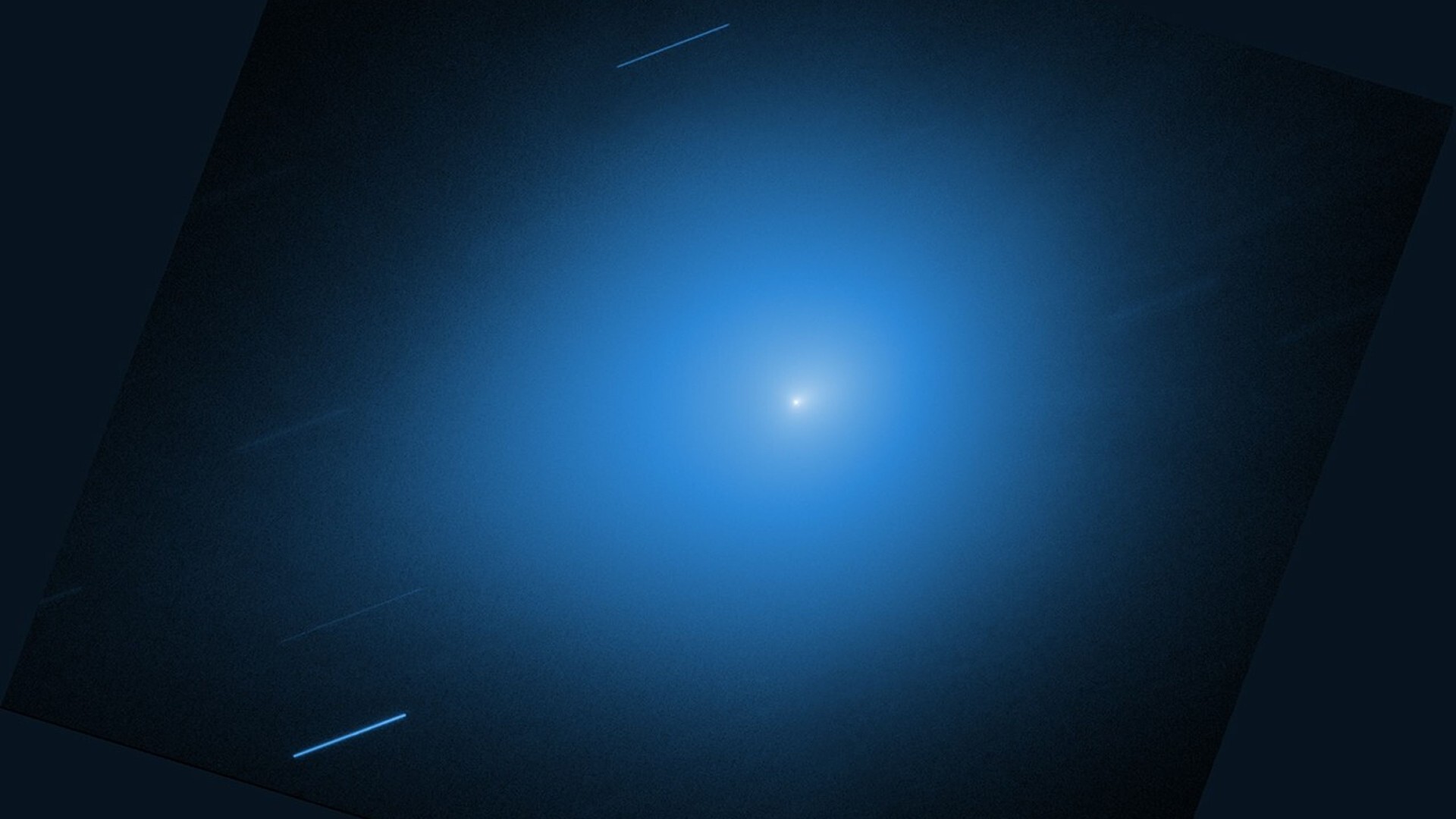Remnants of 1994 Comet Impact Leave Puzzle at Jupiter

Jupiter's atmosphere still contains remnants of a comet impact from a decade ago, but scientists said last week they are puzzled by how two substances have spread into different locations.
The new study also discovered two previously undetected chemicals in Jupiter's air.
Grasping what chemical compounds are in and above the Jovian clouds and how they move about could help scientists understand planets outside our solar system, too, said the researchers who produced the work.
From July 16 through July 22, 1994, more than 20 fragments of Comet P/Shoemaker-Levy 9 collided with the gaseous planet, all coming in at about the same latitude, 45 degrees south. Fragments up to 1.2 miles (2 kilometers) sent plumes of hot gas into the Jovian atmosphere. Dark scars lasted for weeks.
Shocks created by the impacts led to high-temperature chemical reactions that produced hydrogen cyanide, which remains in the air but has been spread around a bit in the years since. The comet also delivered carbon monoxide and water, which through an interaction with sunlight, scientists suspect, was converted to carbon dioxide.
The Cassini spacecraft, now at Saturn, examined Jupiter as it swung by. The new study draws on infrared data from Cassini collected in 2000 and 2001.
The hydrogen cyanide has diffused some both north and south, mixed by wave activity, explained Michael Flasar of NASA's Goddard Space Flight Center. Jupiter's cloud bands carry material around the planet swiftly, but the bands do not mix easily. Not surprisingly, hydrogen cyanide is most abundant in a belt at the latitude where the comet was absorbed. At five degrees of latitude change in both directions, its presence drops off sharply.
Breaking space news, the latest updates on rocket launches, skywatching events and more!
The highest concentration of carbon dioxide, however, has shifted away from the latitude of the impact. It is most prevalent poleward of 60 degrees south and decreases abruptly, toward the equator, north of 50 degrees south. Another smaller spike in its presence occurs at high northern latitudes, around 70 to 90 degrees north.
Perhaps the two chemicals got distributed at different altitudes, and are being moved around by different currents, Flasar told SPACE.com. Or maybe the formation of the carbon dioxide was more complex than thought. He said it might have involved carbon monoxide first moving away from the impact area and then interacting with other substances at higher latitudes before being converted to carbon dioxide.
"At high latitudes, precipitation of energetic oxygen ions probably occurs, associated with Jupiter's magnetically induced lights, known as aurora," Flasar explained. "These energetic ions could react with Jupiter's atmosphere to produce hydroxyl, which can oxidize carbon monoxide to produce carbon dioxide."
If all that sounds complicated, you're not alone in wondering what's going on.
"We're scratching our heads, and we need to work through these, and perhaps other, scenarios," said Flasar, who is principal investigator for Cassini's Composite Infrared Spectrometer.
The study, led by Virgil G. Kunde of the University of Maryland, was published Thursday in the online version of the journal Science.
The work also uncovered two new compounds, diacetylene and a so-called methyl radical, which are products of the breakup of methane by ultraviolet radiation from the Sun. These were expected but had not been observed at Jupiter before.
So far as astronomers know, the more than 100 giant planets found outside our solar system might be something like Jupiter. Only one has had its atmosphere probed. Better knowledge of the substances in Jupiter, and how things move around, should help set the stage for grasping the formation and evolution of gaseous extrasolar planets, the researchers say.
"An understanding of the processes governing the composition and distribution of chemical species in Jupiter's atmosphere is required to successfully understand the chemical composition of extrasolar planets," they write in the journal.
- Comet's Scars on Jupiter
This article is part of SPACE.com's weekly Mystery Monday series.

Rob has been producing internet content since the mid-1990s. He was a writer, editor and Director of Site Operations at Space.com starting in 1999. He served as Managing Editor of LiveScience since its launch in 2004. He then oversaw news operations for the Space.com's then-parent company TechMediaNetwork's growing suite of technology, science and business news sites. Prior to joining the company, Rob was an editor at The Star-Ledger in New Jersey. He has a journalism degree from Humboldt State University in California, is an author and also writes for Medium.
